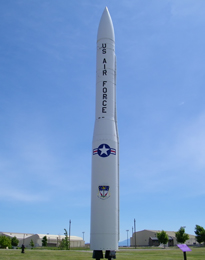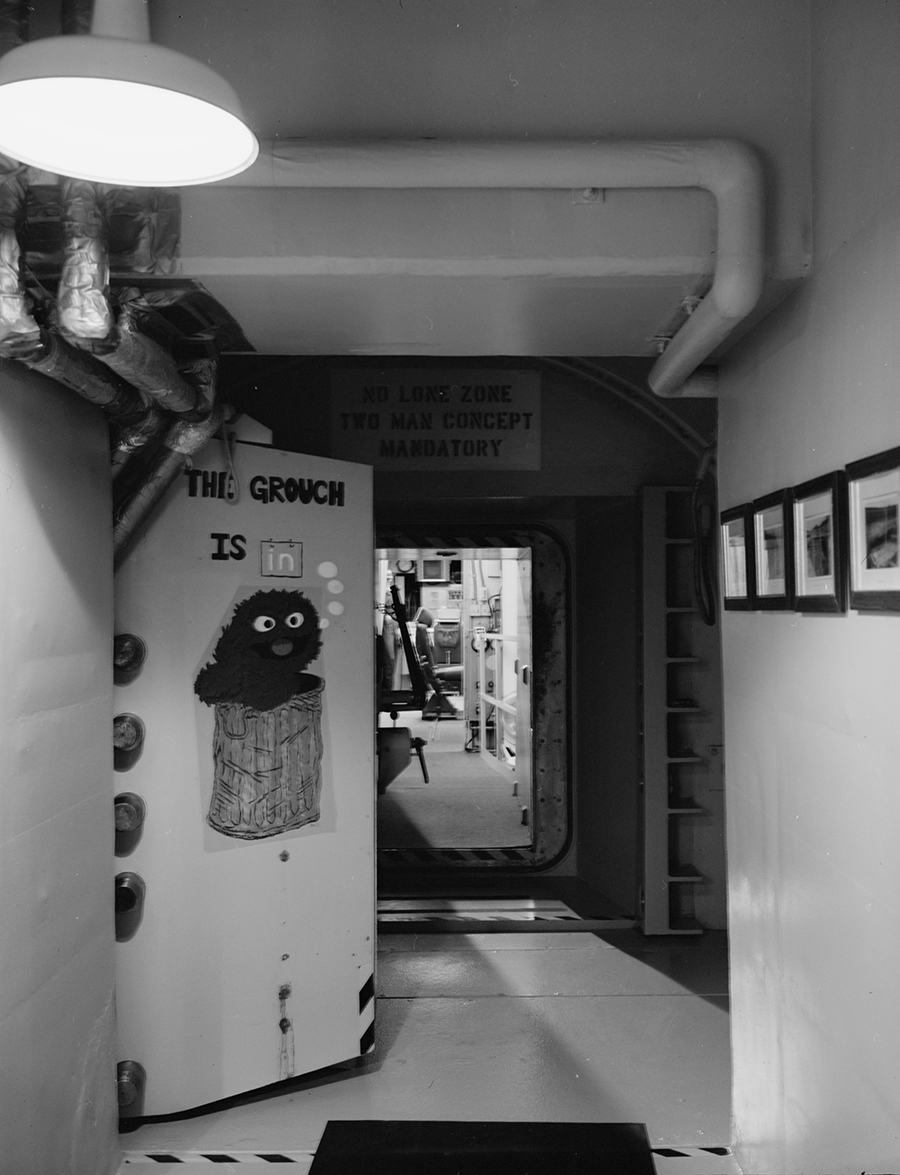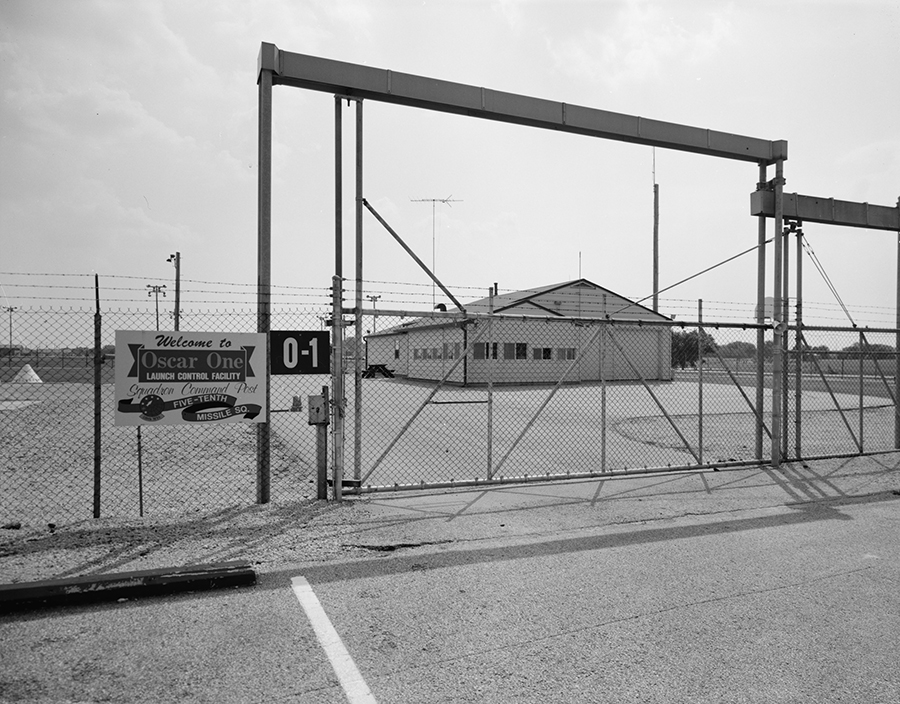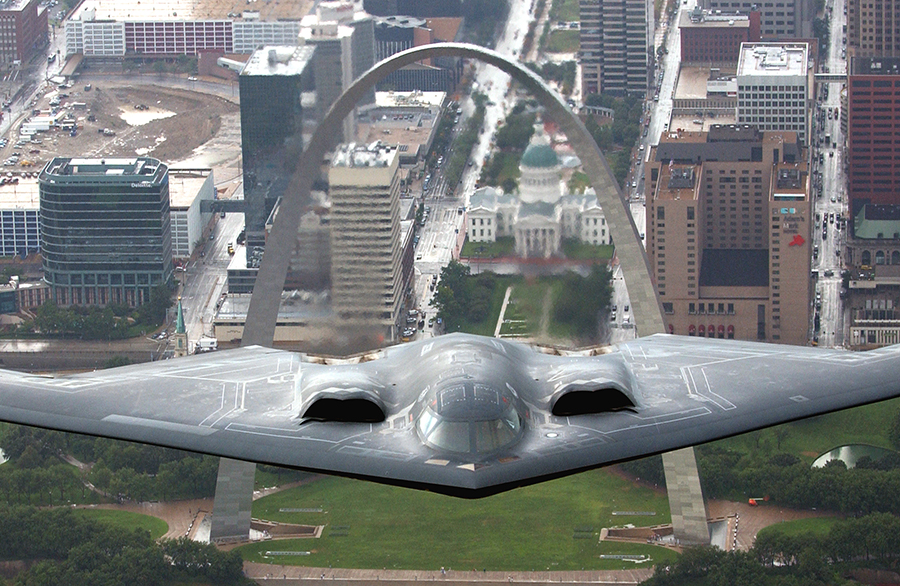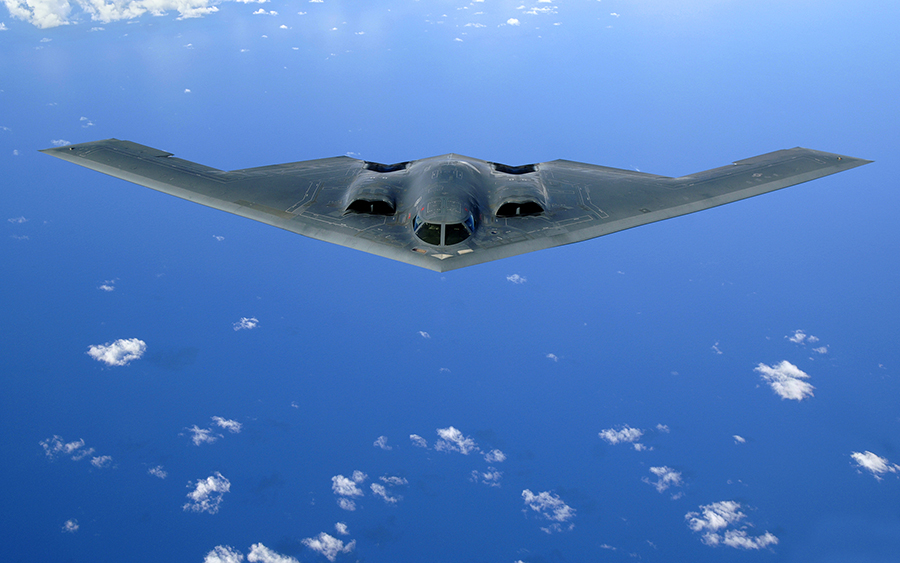Wing IV - Whiteman Air Force Base
Whiteman Air Force Base traces its roots back to 1942 when the United States was beginning to mobilize following the Japanese attack on Pearl Harbor. It was originally activated as Sedalia Glider Base on August 6, 1942. In November 1942 the base became Sedalia Army Air Field and was assigned to the 12th Troop Carrier Command of the Army Air Force. The field functioned as a training base for paratroopers and glider tactics.
A number of aircraft that was assigned to the base were the Douglas C-46s and C-47s, as well as the Weco CG-4A glider. There was a huge demobilization following World War II and the base was closed and most of the buildings were abandoned.
However, Strategic Air Command brought the base back to life in August 1951, when it activated the 422nd Air Base Squadron, whose responsibility was to oversee the rehabilitation and construction of a new base, Sedalia AFB. The 422nd moved forward until October 20, 1952 when it was inactivated and was then turned over to the 340th Bombardment Wing which oversaw the newest aircraft, the B-47 Stratojet and the KC-97 Tanker.
Sedalia AFB was renamed Whiteman AFB on December 3, 1955, in honor of 2nd Lt. George A. Whiteman. Whiteman was a native of Sedalia and was one of the first American Airmen killed in World War II when the Japanese attacked Pearl Harbor on December 7, 1941.
During the attack on Bellows Air Field in Oahu, Lieutenant Whiteman was able to get to his P40 fighter, but while attempting to take off, enemy fighters attacked his plane. Lieutenant Whiteman crashed his plane while attempting to take off, and by the time rescuers reached his plane, Lt. Whiteman had died.
351st Strategic Missile Wing
In June 1961 Whiteman Air Force Base was chosen to become the fourth Minuteman missile wing. Six months later, on January 17, 1962 a team of construction companies consisting of Morrison-Knudsen, Paul Hardeman, Inc., Perini Corporation, and C.H. Leavell and Company were given the prime contract for construction of 150 Launch Facilities and 15 Launch Control Facilities. This project was tasked with the excavation of over 2,000,000 cubic yards of earth and rock.
Whiteman AFB put together ground breaking ceremonies with a host of dignitaries in April 1962 at the site that was to become the Oscar-01 Launch Control Facility. The unique characteristic about this LCF, was that it was the only Launch Control Facility actually located on the base at Whiteman.
The contractors had to use 168,000 cubic yards of concrete, 25,355 tons or reinforcing steel and 15,120 tons of structural steel to complete their project. The contractors were also responsible for the installation of a vast underground intersite cable network, the Hardened Intersite Cable System, HICS. Once completed, if the HICS cable system were to be laid end to end in a straight line, the cable would stretch from Whiteman AFB in Missouri heading west and extending 100 miles beyond Los Angeles, California.
In total, the construction project took two years, two months and two weeks to complete. The Launch Facilities were located at a minimum separation of 3 miles between each LF, which created a missile complex of approximately 10,000 square miles at Whiteman AFB. February 1, 1963 marked the date when Whiteman AFB received its first Minuteman IB missile from Hill Air Force Base, out of Utah. At a cost of $60,665,000 the 351st Strategic Missile Wing emplaced its final Minuteman IB missile completing its construction project and Whiteman AFB went on full operational alert on June 29, 1964.
Starting on May 7, 1966 and finishing in October 1967, Whiteman AFB modernized its Minuteman missile force with the next generation, Minuteman II missile.
In the late 1980s the 351st SMW had the distinction of being the first missile wing to have the first female Minuteman missile crew, the first male and female Minuteman crew, as well as the first squadron commander to pull alert in the Minuteman weapon system.
A significant event that would greatly impact the future of Whiteman AFB occurred on January 5, 1987, when Congressman Ike Skelton announced that the first deployment of the new B-2 Advanced Technology Bomber would be assigned to Whiteman. Starting in 1988 a huge team of construction workers overtook the base as new buildings designed for the B-2 operations, maintenance and support activities, were built at an incredibly rapid pace.
Deactivation Of The 351st Strategic Missile Wing
A second major event to impact Whiteman AFB occurred on July 31, 1991 when President George H.W. Bush and Premier Mikhail Gorbachev signed the Strategic Arms Reduction Treaty (START) which called for dismantling and destruction of the Minuteman II missiles. President Bush ordered a stand-down of all deployed Minuteman II missiles. Less than 24 hours later, the 351st Strategic Missile Wing had all 150 of the Minuteman II missiles off alert.
Two years later the 351st missile wing shut down its first Launch Control Center, India-01. On May 7, 1993 the last Reentry vehicle was removed from its missile at the Golf-02 Launch Facility, followed by Whiteman imploding its first Launch Facility, the India-02, on December 8, 1993. The last Minuteman II missile at the 351st SMW was removed from the Juliet-03 Launch Facility on May 18, 1995. Whiteman Air Force Base officially inactivated the 351st SMW on July 31, 1995.
B-2 Bomber 509th Bomb Wing
509th Bomb Wing
The 509th Bomb Wing has historical connections to its World War II predecessor, the 509 Composite Group, which was formed with one mission in mind - to drop the atomic bomb. The Group made history on August 6, 1945 when the B-29 "Enola Gay," piloted by Colonel Paul W. Tibbets, Jr. dropped the first atomic bomb on Hiroshima, Japan. Three days later, Major Charles Sweeney, piloting the "Bockscar" dropped the second atomic bomb on Nagasaki, on August 9, 1945.
The 509th Bomb Wing was transferred to Whiteman AFB on September 30, 1990. Construction on the base continued to move forward at a frenzied pace, getting prepared for the B-2 Bomber. December 17, 1993 marked the date when the first dark, sleek B-2 dropped out of the sky and landed at Whiteman AFB at approximately 2 PM. The first B-2, the "Spirit of Missouri", had arrived to its new home.
For further information about Whiteman Air Force Base, follow the link below to their website.
Operation ALLIED FORCE
The B-2 was deployed to its first combat sortie on March 23, 1999, during NATO operations in Serbia and Kosovo, which was the first sustained offensive combat air offensive conducted solely from US soil. Over a period of approximately 2 months, the 509th BW generated 49 B-2 sorties, which were flown directly from Missouri to Europe, and returning back to the 509th. These missions consisted of approximately 29 hours of flight time, proving the immense asset and lethal global reach possessed by the B-2 Bomber.
